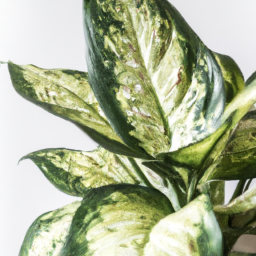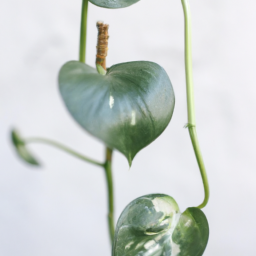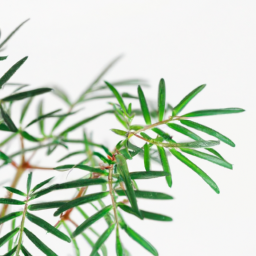
Are you looking to add some greenery to your home but don’t have a lot of natural light? Don’t worry, there are plenty of plants that don’t need sun to thrive! These low-light plants are perfect for brightening up any room, no matter how dark it may be. Whether you have a windowless office or a basement apartment, there are options for every space. Keep reading to discover some of the best plants that don’t need sun and how to care for them.
Benefits of Low-Light Plants in Indoor Spaces
As an expert in plants that don’t need sun, I am excited to share with you the many benefits of incorporating low-light plants into your indoor spaces. Whether you live in a dimly lit apartment or simply want to add some greenery to a room with limited sunlight, low-light plants are the perfect solution. Not only are these plants easy to care for, but they can also improve air quality, boost mood, and add a touch of nature to your home or office.
Improved Air Quality
One of the key benefits of low-light plants is their ability to improve air quality in indoor spaces. Plants naturally absorb carbon dioxide and release oxygen through the process of photosynthesis. In addition, certain low-light plants, such as snake plants and pothos, are known for their ability to filter out harmful toxins like formaldehyde and benzene from the air. By adding these plants to your home or office, you can create a healthier environment for yourself and your loved ones.
Furthermore, the presence of plants can help to increase humidity levels in indoor spaces, which can be particularly beneficial during the dry winter months. This can help to alleviate symptoms of dry skin, allergies, and respiratory issues. In essence, low-light plants act as natural air purifiers, making your indoor spaces not only more beautiful but also healthier to inhabit.
When selecting low-light plants for improved air quality, consider options such as peace lilies, spider plants, and Chinese evergreens. These plants are not only low-maintenance but also highly effective at removing toxins from the air, making them ideal choices for any indoor space.
Mood-Boosting Properties
In addition to improving air quality, low-light plants have been shown to have mood-boosting properties. Research has demonstrated that the presence of plants in indoor spaces can help to reduce stress, anxiety, and fatigue. The sight of greenery has a calming effect on the mind and can help to create a sense of tranquility and well-being.
Furthermore, caring for plants can be a therapeutic and rewarding experience. The act of nurturing a living thing and watching it grow can bring a sense of accomplishment and joy. Low-light plants are perfect for beginners or those with busy schedules, as they require minimal care and can thrive in low-light conditions.
To maximize the mood-boosting benefits of low-light plants, consider placing them in areas where you spend the most time, such as your bedroom or home office. Options like ZZ plants, ferns, and philodendrons are great choices for creating a calming and inviting atmosphere in any room.
Natural Décor Element
Finally, low-light plants serve as a beautiful and natural décor element in indoor spaces. Whether you prefer a minimalist aesthetic or a lush jungle vibe, there is a low-light plant to suit your style. From trailing vines to sculptural succulents, the variety of low-light plants available allows you to express your personal taste and enhance the aesthetic of your home or office.
Plants can add texture, color, and life to any room, making them a versatile and dynamic design element. Whether displayed in a hanging planter, on a shelf, or in a statement pot, low-light plants can instantly elevate the look of a space and create a welcoming atmosphere.
To make the most of low-light plants as décor, consider mixing and matching different plant varieties to create visual interest. Grouping plants of varying heights and textures can create a dynamic and harmonious display that will draw the eye and add warmth to your indoor spaces.

Top 5 Plants that Thrive in Low-Light Environments
Understanding Low-Light Environments
When it comes to choosing plants for areas with low light, it’s important to understand what constitutes a low-light environment. Low-light environments are typically areas that receive minimal natural sunlight, such as rooms with small windows or spaces that are shaded by buildings or trees. While most plants require some level of sunlight to thrive, there are certain plants that have adapted to low-light conditions and can still flourish.
Benefits of Plants in Low-Light Environments
Plants not only add beauty and a touch of nature to indoor spaces, but they also offer a range of benefits, even in low-light environments. Plants can help improve air quality by absorbing carbon dioxide and releasing oxygen through photosynthesis. They can also help reduce stress, increase productivity, and create a sense of calm and well-being in indoor spaces. Choosing the right plants for low-light environments can help you enjoy these benefits without the need for direct sunlight.
Top 5 Plants for Low-Light Environments
1. **Snake Plant (Sansevieria)**: The snake plant is a popular choice for low-light environments due to its ability to thrive in almost any lighting condition. It has striking, upright leaves that come in a variety of patterns and colors, making it a stylish addition to any space. Snake plants are also known for their air-purifying properties, making them a great choice for improving indoor air quality.
2. **ZZ Plant (Zamioculcas Zamiifolia)**: The ZZ plant is another low-maintenance option for low-light environments. It has glossy, dark green leaves that add a touch of elegance to any room. The ZZ plant is highly drought-tolerant and can go for long periods without water, making it a great choice for busy individuals or forgetful plant owners.
3. **Peace Lily (Spathiphyllum)**: The peace lily is a classic choice for low-light environments, thanks to its ability to thrive in shady conditions. It produces elegant white flowers that add a touch of beauty to any space. The peace lily is also known for its air-purifying properties, making it a great choice for improving indoor air quality.
4. **Pothos (Epipremnum Aureum)**: Pothos is a versatile plant that can thrive in low-light environments as well as bright, indirect light. It has heart-shaped leaves that come in a variety of colors, from green to variegated shades. Pothos is a fast-growing plant that can easily be propagated from cuttings, making it a great choice for beginners or those looking to expand their plant collection.
5. **Spider Plant (Chlorophytum Comosum)**: The spider plant is a hardy plant that can thrive in a variety of lighting conditions, including low light. It has long, arching leaves that produce small plantlets, or “spiderettes,” that dangle from the mother plant. Spider plants are known for their air-purifying properties and ability to remove toxins from indoor air, making them a great choice for low-light environments.
In conclusion, choosing the right plants for low-light environments can help you enjoy the benefits of indoor plants without the need for direct sunlight. By selecting plants that are well-suited to shady conditions, such as snake plants, ZZ plants, peace lilies, pothos, and spider plants, you can create a green and thriving indoor oasis that enhances your space and improves your well-being.

How to Care for Shade-Loving Plants: Tips and Tricks
Understanding Shade-Loving Plants
When it comes to caring for shade-loving plants, it’s important to understand their unique needs and characteristics. Shade-loving plants, also known as shade plants, thrive in low light conditions and do not require direct sunlight to grow. These plants are perfect for areas in your garden that receive minimal sunlight throughout the day, such as under trees or on the north side of your home.
One of the key characteristics of shade-loving plants is their ability to adapt to low light conditions. These plants have evolved to efficiently capture and use the limited sunlight that they receive, making them ideal for shady spots in your garden. Some shade-loving plants have even developed unique features, such as larger leaves or variegated foliage, to help them maximize their light absorption.
When choosing shade-loving plants for your garden, it’s important to consider the specific lighting conditions of the area where you plan to plant them. Some shade-loving plants can tolerate dappled sunlight or filtered light, while others prefer deep shade. By understanding the light requirements of your shade-loving plants, you can ensure that they thrive and flourish in their new environment.
In addition to their light requirements, shade-loving plants also have specific water and soil needs. These plants typically prefer moist, well-draining soil that is rich in organic matter. To care for shade-loving plants, be sure to water them regularly, especially during hot, dry weather. Mulching around the base of the plants can help retain moisture and regulate soil temperature, creating a healthy growing environment for your shade-loving plants.
Caring for Shade-Loving Plants
Once you have selected and planted your shade-loving plants, it’s important to provide them with the proper care and maintenance to ensure their health and vitality. Here are some tips and tricks for caring for shade-loving plants:
1. Watering: Shade-loving plants generally require more frequent watering than sun-loving plants, as they have less access to sunlight to help them photosynthesize and produce energy. Be sure to water your shade-loving plants regularly, keeping the soil consistently moist but not waterlogged. Water in the early morning or late evening to minimize evaporation and ensure that the plants have enough moisture to thrive.
2. Fertilizing: To promote healthy growth and blooming, consider fertilizing your shade-loving plants with a balanced, slow-release fertilizer. Apply the fertilizer according to the manufacturer’s instructions, taking care not to over-fertilize, which can lead to nutrient imbalances and plant stress. Fertilize your shade-loving plants in the spring and summer months, when they are actively growing and benefit most from the additional nutrients.
3. Pruning: Regular pruning is essential for maintaining the health and appearance of your shade-loving plants. Remove any dead, damaged, or diseased foliage to prevent the spread of disease and promote new growth. Prune your shade-loving plants in the early spring or late fall, when they are dormant and less likely to be stressed by the pruning process. Be sure to use sharp, clean pruning tools to make clean cuts and minimize damage to the plants.
4. Pest and Disease Control: Keep an eye out for common pests and diseases that can affect shade-loving plants, such as aphids, spider mites, and powdery mildew. Monitor your plants regularly for signs of infestation or disease, such as yellowing leaves, wilting foliage, or discolored spots. If you notice any issues, take prompt action to control the pests or disease, using organic or chemical treatments as needed. Preventative measures, such as proper watering, pruning, and fertilizing, can also help reduce the risk of pest and disease problems in your shade-loving plants.
By following these tips and tricks for caring for shade-loving plants, you can create a beautiful and thriving garden filled with lush, green foliage and colorful blooms. With the right care and attention, your shade-loving plants will reward you with years of beauty and enjoyment in your outdoor space.
I’ll leave you with these final thoughts
Did you know that there are plants out there that don’t need sunlight to thrive? It’s true! While most plants do require sunlight for photosynthesis, there are some varieties that can survive in low-light conditions. These plants are perfect for those homes or offices that don’t get a lot of natural light.
Some examples of plants that don’t need sun include the snake plant, peace lily, and ZZ plant. These plants are not only easy to care for, but they can also help purify the air in your space. So if you’re looking to add some greenery to a room with limited sunlight, consider adding one of these low-light plants to your collection. You’ll be amazed at how they can thrive even in the darkest corners of your home.
Here are some questions from our readers:
Q1. What are some plants that don’t need sun?
A1. Some plants that thrive in low-light conditions and don’t require direct sunlight include snake plants, peace lilies, pothos, and ZZ plants.
Q2. How often should I water plants that don’t need sun?
A2. Plants that don’t need sun typically require less frequent watering compared to sun-loving plants. It’s important to let the soil dry out between waterings to prevent overwatering.
Q3. Can plants that don’t need sun survive in artificial light?
A3. Yes, plants that don’t need sun can survive and even thrive in artificial light, such as fluorescent or LED grow lights. Just make sure to provide them with the right intensity and duration of light.
Q4. Do plants that don’t need sun still need fertilizer?
A4. Yes, plants that don’t need sun still benefit from occasional fertilization. Use a balanced, water-soluble fertilizer diluted to half strength to provide essential nutrients for healthy growth.
Q5. Are there any benefits to having plants that don’t need sun?
A5. Plants that don’t need sun are great for indoor spaces with low light levels, such as offices or bathrooms. They can help improve air quality, reduce stress, and add a touch of greenery to your living environment.

James Wong is a renowned ethnobotanist, plant scientist, and local television presenter. With a passion for demystifying plant science, he is known for translating complex botanical concepts into practical advice for everyday plant enthusiasts. James’s expertise spans from traditional gardening to cutting-edge plant technologies, making his insights accessible and informative.


